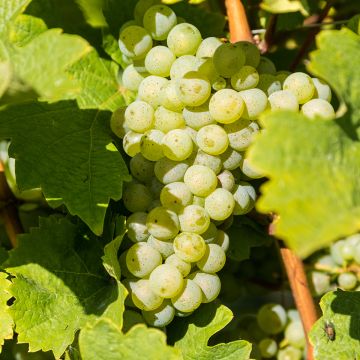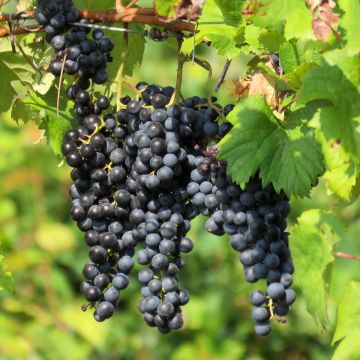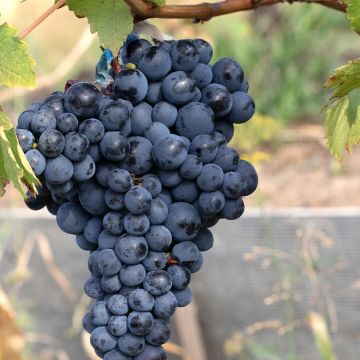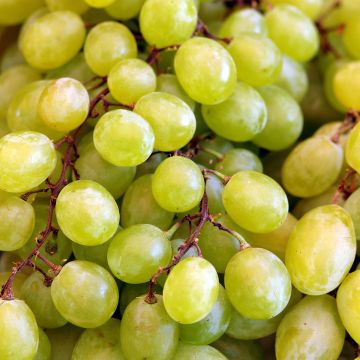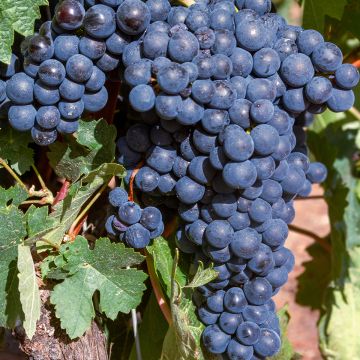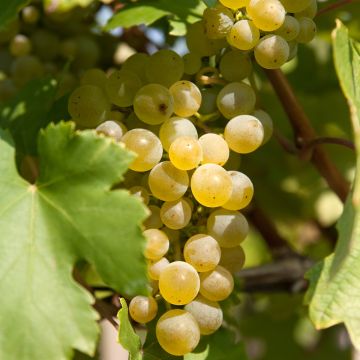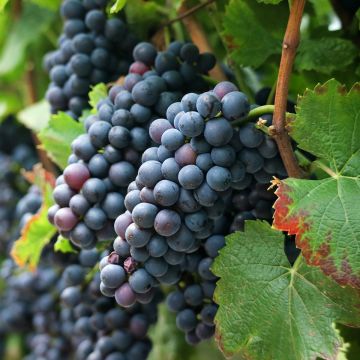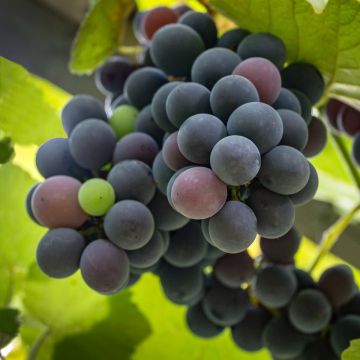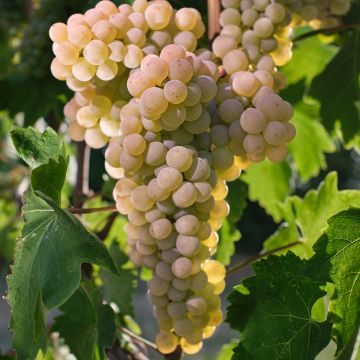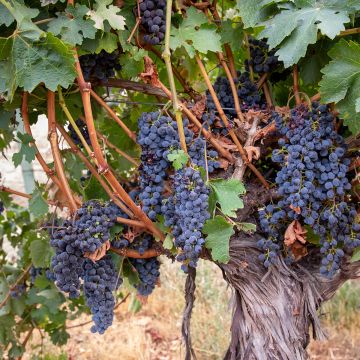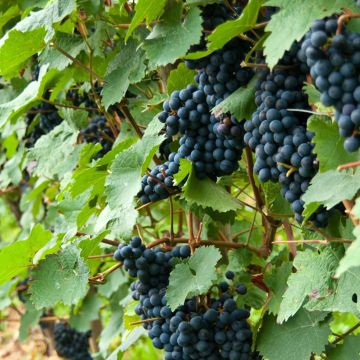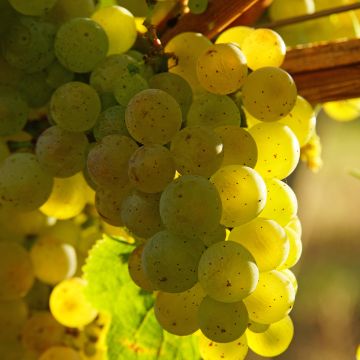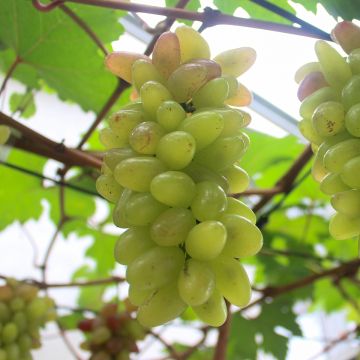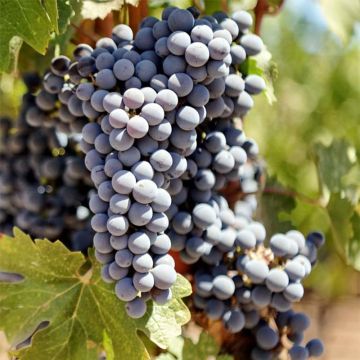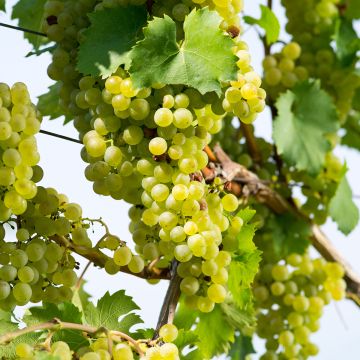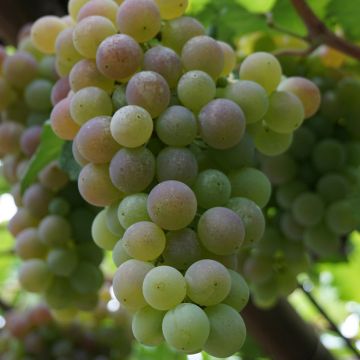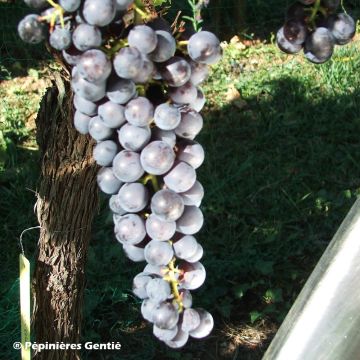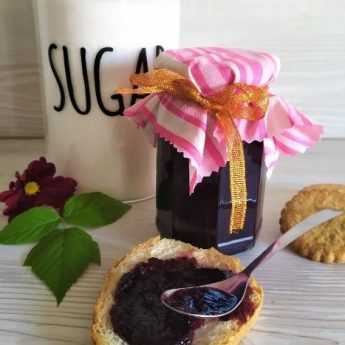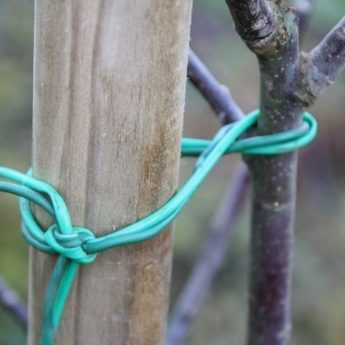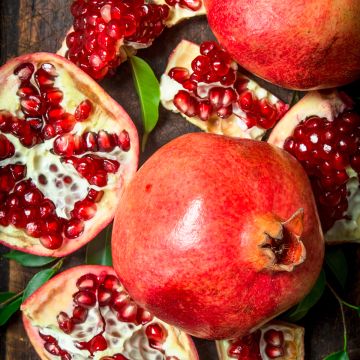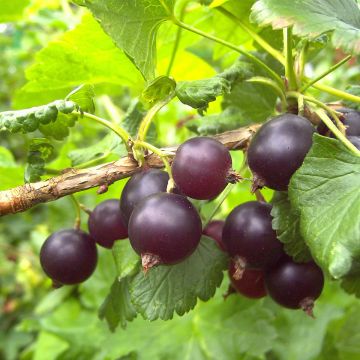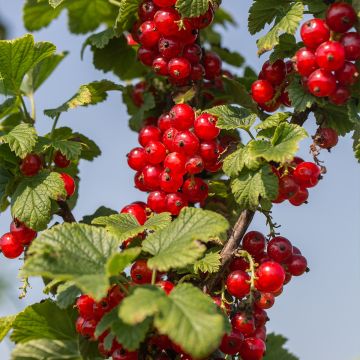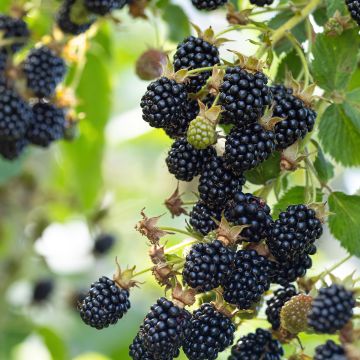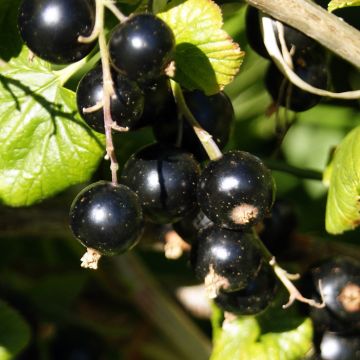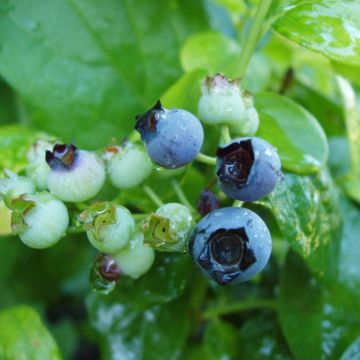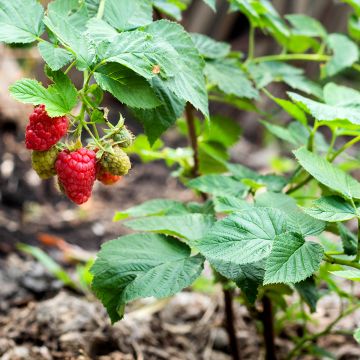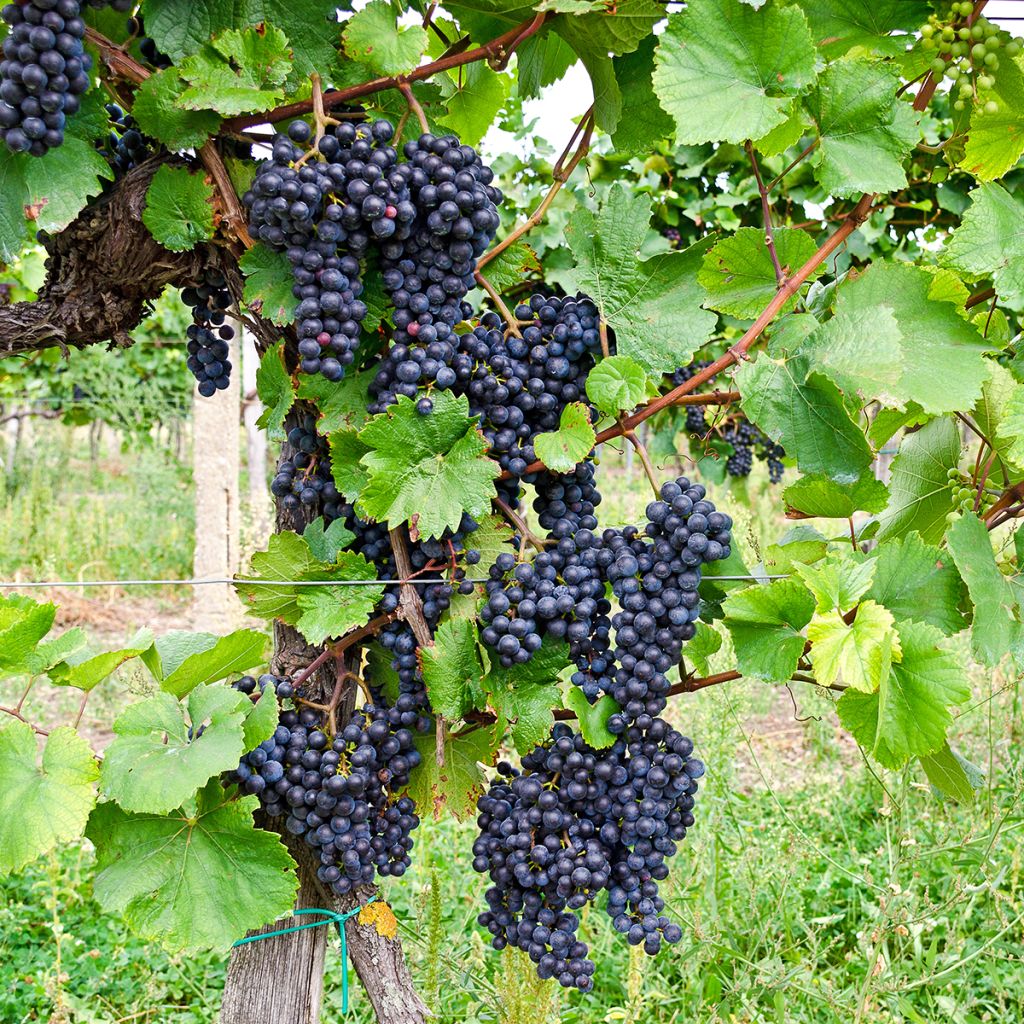

Vitis vinifera Croatina - Grapevine
Vitis vinifera Croatina - Grapevine
Vitis vinifera Croatina
Grapevine, Common grape vine, European grape
Why not try an alternative variety in stock?
View all →This plant carries a 6 months recovery warranty
More information
We guarantee the quality of our plants for a full growing cycle, and will replace at our expense any plant that fails to recover under normal climatic and planting conditions.
Description
Vitis vinifera 'Croatina' is a variety of wine grape. It is an old "red" grape variety, cultivated in the regions of Lombardy, Emilia-Romagna, but also in certain parts of Piedmont and Veneto, but very little known in other wine-growing countries. It has similar characteristics to 'Dolcetto' in that it tends to produce fruity wines, deep in colour and slightly tannic that benefit from bottle ageing. It is also a blending grape, especially with Barbera. Its fairly large clusters are composed of berries with a chalky, fairly thick, blackish-blue skin. This vine ripens late, in late September or early October. It particularly likes deep, clay-loam or clay-limestone soils.
The wine grape (Vitis vinifera) grew wild over 5000 years ago. Many hybrids have been created to vary colours, flavours, and uses. The 'Croatina' vine is a very old Italian variety. Its synonym 'Bonarda' leads to confusion with the Bonarda from Piedmont, with which it has no parentage. In Italy, it is both vinified alone as a dry, sweet, or even sparkling wine; or blended with other varieties such as black Barbera or Nebbiolo.
Croatina is a vigorous climbing shrub which can reach up to 5m. Its final shape will depend on the pruning practised. The sun-loving vine attaches itself to its support (trellis, espalier...) thanks to its tendrils. It has a semi-erect to horizontal habit. It is advisable to train it on wire and support it well. It is indifferent to the nature of the soil and undemanding, but it still prefers clay-loam or clay-limestone soils. It will require careful bud pruning. Its deeply cut foliage is a deep green in summer, with the edges of its leaves turning red in autumn. It flowers in clusters in May, with very small greenish flowers. Its medium-sized clusters of grapes ripen in October, depending on the region. The fairly large, cylindrical-conical, compact, winged clusters, with thin and long peduncles, are composed of medium-sized, spherical, short or slightly ellipsoidal berries, with a fairly thick and tough chalky skin. The flesh is juicy and the juice is colourless with a simple flavour. This grape variety produces a tannic, supple wine with moderate acidity and a very slight bitterness when young. It reveals aromas of charcoal, black tea leaves, smoke, wild berries (blackcurrant, cherry, blackberry), undergrowth, and old leather.
The 'Croatina' vine is vigorous and productive, but it has a tendency to alternate, so it is best to prune it to a medium length. It is sensitive to winter cold, quite resistant to powdery mildew and grey rot except in very rainy years. It is slightly less resistant to downy mildew, drought, and stem desiccation.
Grapes are consumed as wine after vinification.
Report an error about the product description
Plant habit
Fruit
Flowering
Foliage
Botanical data
Vitis
vinifera
Croatina
Vitaceae
Grapevine, Common grape vine, European grape
Vitis Crovattina, Croata, Croato, Bonarda grossa, Bonarda di Rovescala, Bonarda pignola, Bonarda di Gattimara, uva vermiglia
Western Europe
Other Grapevines
View all →Planting and care
Since the ravages of phylloxera at the end of the 19th century, the vine is grafted onto different rootstocks resistant to this disease and adapted to different types of soil. These rootstocks come from American varieties. Plant the Croatina Vine in autumn, in deep, well-drained, even stony, arid, poor and chalky soil, in a sunny exposure, sheltered from strong winds. Incorporate 3 or 4 handfuls of fertiliser for fruit trees and 2 kg of composted manure into the planting soil, for each vine-plant. The roots must not be in contact with the manure. After planting, prune above 2 large buds (buds) to obtain two branches. Keep the most vigorous one, and tie it to a stake. Pruning will follow.
The vine does not require regular fertiliser application, for good yield, on the contrary. Enrich the soil with potash, crushed horn or iron chelate, only every 2-3 years.
Planting period
Intended location
Care
Planting & care advice
This item has not been reviewed yet - be the first to leave a review about it.
Similar products
Haven't found what you were looking for?
Hardiness is the lowest winter temperature a plant can endure without suffering serious damage or even dying. However, hardiness is affected by location (a sheltered area, such as a patio), protection (winter cover) and soil type (hardiness is improved by well-drained soil).

Photo Sharing Terms & Conditions
In order to encourage gardeners to interact and share their experiences, Promesse de fleurs offers various media enabling content to be uploaded onto its Site - in particular via the ‘Photo sharing’ module.
The User agrees to refrain from:
- Posting any content that is illegal, prejudicial, insulting, racist, inciteful to hatred, revisionist, contrary to public decency, that infringes on privacy or on the privacy rights of third parties, in particular the publicity rights of persons and goods, intellectual property rights, or the right to privacy.
- Submitting content on behalf of a third party;
- Impersonate the identity of a third party and/or publish any personal information about a third party;
In general, the User undertakes to refrain from any unethical behaviour.
All Content (in particular text, comments, files, images, photos, videos, creative works, etc.), which may be subject to property or intellectual property rights, image or other private rights, shall remain the property of the User, subject to the limited rights granted by the terms of the licence granted by Promesse de fleurs as stated below. Users are at liberty to publish or not to publish such Content on the Site, notably via the ‘Photo Sharing’ facility, and accept that this Content shall be made public and freely accessible, notably on the Internet.
Users further acknowledge, undertake to have ,and guarantee that they hold all necessary rights and permissions to publish such material on the Site, in particular with regard to the legislation in force pertaining to any privacy, property, intellectual property, image, or contractual rights, or rights of any other nature. By publishing such Content on the Site, Users acknowledge accepting full liability as publishers of the Content within the meaning of the law, and grant Promesse de fleurs, free of charge, an inclusive, worldwide licence for the said Content for the entire duration of its publication, including all reproduction, representation, up/downloading, displaying, performing, transmission, and storage rights.
Users also grant permission for their name to be linked to the Content and accept that this link may not always be made available.
By engaging in posting material, Users consent to their Content becoming automatically accessible on the Internet, in particular on other sites and/or blogs and/or web pages of the Promesse de fleurs site, including in particular social pages and the Promesse de fleurs catalogue.
Users may secure the removal of entrusted content free of charge by issuing a simple request via our contact form.
The flowering period indicated on our website applies to countries and regions located in USDA zone 8 (France, the United Kingdom, Ireland, the Netherlands, etc.)
It will vary according to where you live:
- In zones 9 to 10 (Italy, Spain, Greece, etc.), flowering will occur about 2 to 4 weeks earlier.
- In zones 6 to 7 (Germany, Poland, Slovenia, and lower mountainous regions), flowering will be delayed by 2 to 3 weeks.
- In zone 5 (Central Europe, Scandinavia), blooming will be delayed by 3 to 5 weeks.
In temperate climates, pruning of spring-flowering shrubs (forsythia, spireas, etc.) should be done just after flowering.
Pruning of summer-flowering shrubs (Indian Lilac, Perovskia, etc.) can be done in winter or spring.
In cold regions as well as with frost-sensitive plants, avoid pruning too early when severe frosts may still occur.
The planting period indicated on our website applies to countries and regions located in USDA zone 8 (France, United Kingdom, Ireland, Netherlands).
It will vary according to where you live:
- In Mediterranean zones (Marseille, Madrid, Milan, etc.), autumn and winter are the best planting periods.
- In continental zones (Strasbourg, Munich, Vienna, etc.), delay planting by 2 to 3 weeks in spring and bring it forward by 2 to 4 weeks in autumn.
- In mountainous regions (the Alps, Pyrenees, Carpathians, etc.), it is best to plant in late spring (May-June) or late summer (August-September).
The harvesting period indicated on our website applies to countries and regions in USDA zone 8 (France, England, Ireland, the Netherlands).
In colder areas (Scandinavia, Poland, Austria...) fruit and vegetable harvests are likely to be delayed by 3-4 weeks.
In warmer areas (Italy, Spain, Greece, etc.), harvesting will probably take place earlier, depending on weather conditions.
The sowing periods indicated on our website apply to countries and regions within USDA Zone 8 (France, UK, Ireland, Netherlands).
In colder areas (Scandinavia, Poland, Austria...), delay any outdoor sowing by 3-4 weeks, or sow under glass.
In warmer climes (Italy, Spain, Greece, etc.), bring outdoor sowing forward by a few weeks.



































